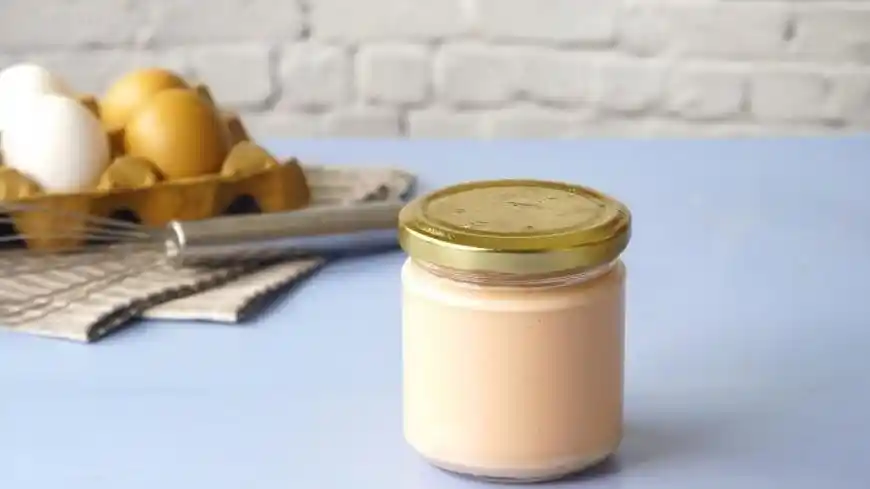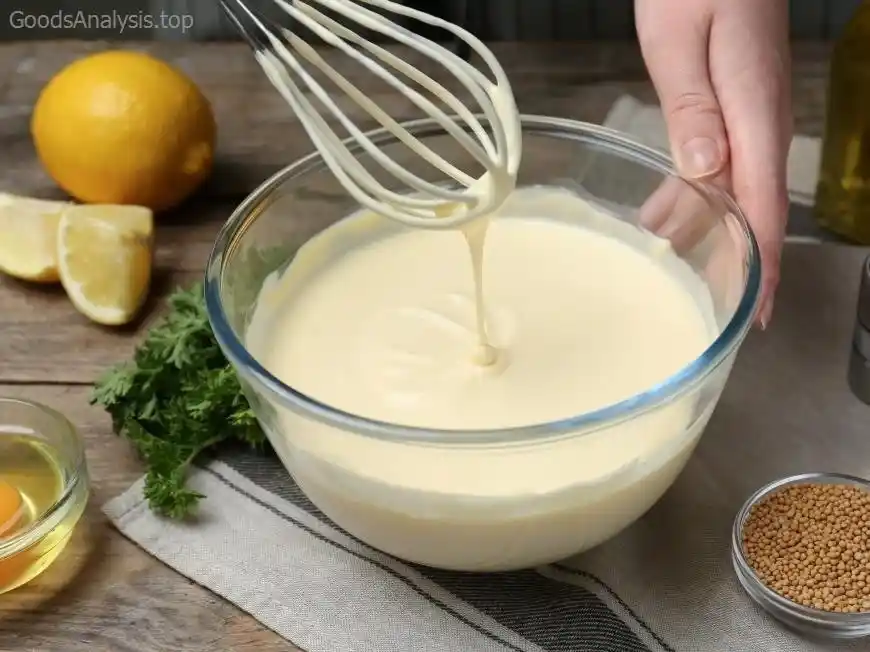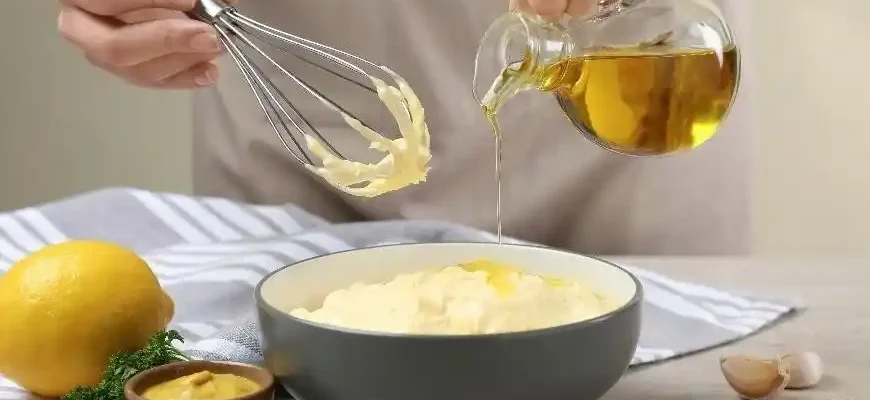Homemade mayonnaise. Just the thought of it conjures up images of creamy, velvety goodness—light years away from the store-bought varieties in the jar. The richness of fresh mayonnaise, with its perfect balance of tang and smooth texture, can transform a simple sandwich or salad into something quite extraordinary. But, as someone who’s been making mayo for decades, I know that it’s not as simple as tossing a few ingredients into a bowl. There’s an art to it, and yes, even a science. But don’t worry—if I can master it, so can you.
The Basic Ingredients: What You’ll Need
Making mayonnaise at home requires just a handful of basic ingredients, all of which you probably already have in your kitchen. The key to successful mayo lies in the balance of these ingredients and the technique you use to emulsify them.
Here’s what you’ll need:
- Egg yolks (usually 2 large ones)
- Vegetable or canola oil (about 1 to 1.5 cups)
- Vinegar or lemon juice (1 tablespoon, but you can adjust this to taste)
- Mustard (Dijon is popular, but any type will work—this is optional)
- Salt (to taste, about ½ to 1 teaspoon)
- White pepper (optional, but a pinch can make a difference)
- Water (sometimes used to adjust thickness)
You can always tweak the quantities based on your preference. I’ll talk more about that later.
The Technique: How to Make Mayonnaise
Now, let’s break it down step-by-step. It’s actually simpler than it sounds.
- Prepare Your Ingredients: Start by getting everything ready. Make sure your egg yolks are at room temperature. This will help them emulsify better with the oil. The same goes for the vinegar or lemon juice—room temperature is your friend. Cold ingredients are the enemy of mayo-making!
- Combine Egg Yolks and Mustard: In a clean, dry bowl, whisk together the egg yolks and mustard. If you’re using Dijon mustard (which I recommend for flavor), it adds a subtle tang that works wonders in mayo.
- Add Vinegar or Lemon Juice: Whisk in the vinegar or lemon juice. It not only gives mayo that signature tang but also helps stabilize the emulsification process. You want a nice, smooth mixture before moving on to the next step.
- Slowly Add the Oil: Here’s where the magic happens. With one hand, begin adding the oil very slowly, drop by drop, while whisking constantly with the other hand. Don’t rush this! The slower you add the oil, the better the emulsification process will be. If you dump it all in at once, your mayo will break, and you’ll have a mess on your hands. Once the mixture starts to thicken and emulsify, you can increase the flow of oil slightly, but always keep whisking.
- Adjust the Consistency: After all the oil is incorporated, your mayo should be thick and glossy. If it’s too thick for your liking, you can add a teaspoon or two of water to loosen it up. The mayo should be smooth but spreadable.
- Season to Taste: Add salt, a pinch of white pepper, and more lemon juice or vinegar if necessary. Taste it as you go—this is your chance to make it perfect.

The Science Behind Mayonnaise
I could get into the molecular science behind why mayonnaise works, but I’ll spare you the chemistry lecture. Just know this: mayonnaise is an emulsion. Essentially, it’s a mixture of oil and water-based ingredients (egg yolks, vinegar, mustard), which normally don’t combine easily. But thanks to the lecithin in egg yolks, you can combine them in a stable way. When whisking, you’re breaking the oil into tiny droplets, which the egg yolk binds to, creating a creamy consistency. It’s magic, really.
That’s why the speed at which you add the oil is so important—if you rush it, the emulsion will break down, and you’ll be left with oily liquid instead of smooth mayo.
Tips and Troubleshooting
Even though mayonnaise is pretty straightforward, things can go awry. Here are a few common problems and how to fix them:
- Broken Mayo: If your mayo separates into oil and watery liquid, it’s probably because you added the oil too quickly or the ingredients were too cold. No need to panic! Just start over with a fresh egg yolk in a clean bowl, and slowly drizzle in the broken mayo while whisking constantly. It should come back together.
- Too Thin: If your mayo is too runny, it might be because you didn’t add enough oil or didn’t emulsify properly. Try adding a little more oil slowly while whisking to thicken it up.
- Too Thick: If it’s too thick, simply add a bit of water to loosen it. Just a teaspoon at a time.
- Flavor Not Quite Right: Sometimes, the mayo might be a little too sharp or not tangy enough. You can always adjust by adding more lemon juice or vinegar. You can also experiment with adding a pinch of sugar or a dash of hot sauce for extra flavor.
The Health Aspect: Is Homemade Mayo Better for You?
Homemade mayo does have a few advantages over the store-bought stuff, especially in terms of ingredients. Most commercial mayonnaise brands contain preservatives, stabilizers, and artificial flavorings. Homemade mayo, on the other hand, is free from these additives, and you have control over the type of oil you use.

For example, you can choose healthier oils like avocado oil or extra virgin olive oil, which are rich in healthy fats. However, let’s not pretend that mayo is a health food. It’s calorie-dense, so it’s best enjoyed in moderation.
Another consideration is the raw egg. There’s a small risk of salmonella when using raw eggs, but using pasteurized eggs can eliminate that risk. If you’re concerned, look for pasteurized eggs in your supermarket.
A Few Variations You Can Try
- Garlic Aioli: Add minced garlic to your mayo for a quick and easy garlic aioli.
- Spicy Mayo: Stir in some sriracha or hot sauce for a kick.
- Herb Mayo: Fresh chopped herbs like parsley, tarragon, or basil can make your mayo sing.
Real Opinions on Homemade Mayonnaise
- Sara (45, USA): “I’ve been making homemade mayo for years. It’s so much richer than store-bought, and once you get the hang of it, it’s super easy. The hardest part for me was learning to add the oil slowly enough, but once I got it, I’ve never looked back.”
- Raj (30, India): “Making mayo at home felt a bit intimidating at first, but I was surprised at how quickly I got the hang of it. I use olive oil for a healthier version, and it works great. I love making garlic mayo for sandwiches!”
- Helen (58, UK): “I love the idea of making my own mayo, but I’ll admit it’s a bit of a hassle. Still, when you get it right, there’s no comparison. I always add a dash of white wine vinegar for a little extra zing.”
- Marco (27, Italy): “I tried making mayo once, and it didn’t work out—wasn’t thick enough. But now, after reading some tips, I’ve nailed it. Olive oil mayo is a game-changer. I use it for everything from pasta salads to dipping sauce.”
- Fiona (64, Canada): “Homemade mayo is amazing! It’s so much better than the store-bought kind. I always use avocado oil for a healthy twist. My grandkids love it, too!”
Final Thoughts
Making mayonnaise at home is not only satisfying, but it also allows you to customize it to your exact taste preferences. Whether you like it tangy, garlicky, or smooth, homemade mayo can be as unique as you are. So, give it a try. It’s not as difficult as it seems, and once you’ve made your first batch, you’ll wonder why you ever settled for the store-bought stuff.
Enjoy the process, and don’t forget: even if it doesn’t turn out perfect the first time, it’s all part of the fun. Mayonnaise is meant to be made with care and patience—just like any good recipe. And hey, if you mess up, you’ve still got eggs and oil… and that’s a pretty good start!









